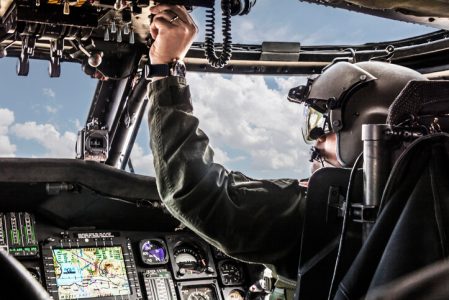Part 135 Pilot Admonishes Passenger Who Could Have Crashed Flight
Pilots must remain vigilant and anticipate potential dangers, intentional or accidental, that can arise from passengers on board aircraft operating under Part 135 and 91 regulations. Although passenger access to flight controls and instrument panels is limited in most flights, there are exceptions. For instance, in personal aircraft, friends or family members may be present. Additionally, as a mercy flight pilot, a parent may accompany the pilot in the copilot’s seat if their child is ill or injured. However, evaluating the mental state of the parent at the time of the flight is crucial, as their behavior can be unpredictable when their child’s life is at stake.
On the other hand, helicopter tour companies conducting sightseeing flights in small aircraft with 4-6 passengers present a different scenario. In these situations, passengers typically have greater access to various areas of the aircraft. Occasionally, a passenger may engage in unexpected behavior that can lead to accidents or near accidents.
Grand Canyon Helitour Flight
During a recent Grand Canyon helitour flight, a concerning incident occurred when a front seat passenger attempted to activate the rotor brake while the helicopter was in cruise flight. Whether this action was intentional or the result of idle curiosity, it posed a significant danger to everyone on board.
Thankfully, the vigilant pilot swiftly intervened, forcefully preventing the potentially catastrophic act, all while emphatically expressing the severity of the situation. Remarkably, the incident was captured on video and shared on TikTok.
Perhaps this alarming incident will serve as an opportunity for tour operators to reinforce safety measures. While all passengers are typically informed to refrain from touching any controls, it may be necessary to go a step further. One potential solution could be to strictly prohibit passengers from occupying the front seat, particularly during Part 135 flights.
Helicopter Pilots Informing Passengers
There are numerous ways pilots can help ensure the flight and passengers of helitours stay safe.
Pre-Flight Measures:
- Ensure that the helicopter is in good working condition before every flight.
- Check the weather conditions and visibility for the day’s flight.
- Perform a thorough pre-flight inspection of the helicopter.
- Check the fuel level and ensure there is enough for the entire flight.
- Gather essential flight information, including the flight route and the planned landmarks or sites to be visited.
Communication with Passengers:
- Welcome passengers and introduce yourself before boarding.
- Provide all passengers with safety instructions before takeoff.
- Answer any passenger questions and address any concerns they may have.
- Brief passengers about the landmarks or sights they will see during the flight.
- Remind passengers to keep their seat belts fastened throughout the flight.
- Use headsets to provide clear communication between the pilot and passengers.
- Ensure that passengers thoroughly understand all safety guidelines and instructions.
Safety Measures:
- Ensure that all passengers wear their seat belts correctly and securely.
- Monitor weather conditions and maintain situational awareness throughout the flight.
- Always follow air traffic control communications and guidelines.
- Establish radio contact with ground operations at regular intervals.
- Remain alert and avoid distractions during the flight.
By following these measures, helitour pilots can help guarantee the safety of their passengers and provide them with an interactive and informative experience on their tour location helicopter flight. Pre-flight measures, effective communication with passengers and attention to safety are all essential components that contribute to a safe and enjoyable helicopter tour.
RELATED READING
RELATED CTS TRAINING










